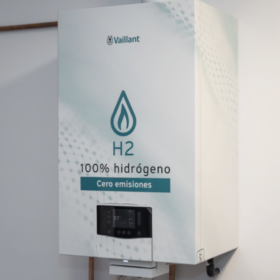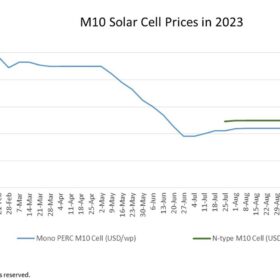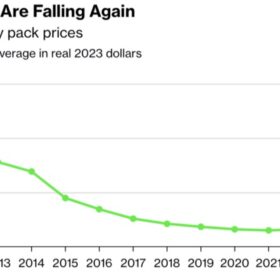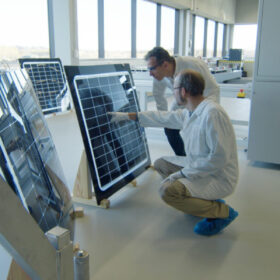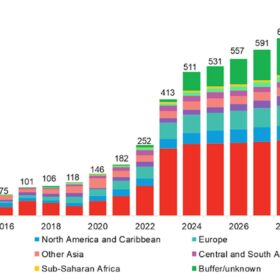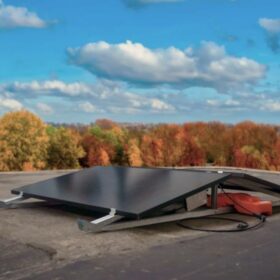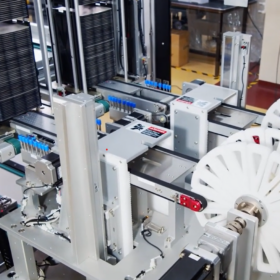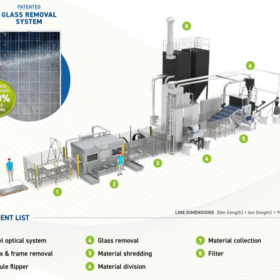Spanish gas provider tests hydrogen-powered residential water heater tech
Madrileña Red de Gas is testing a heating system prototype developed by Germany company Vaillant that uses exclusively green hydrogen. The 25 kW system is equivalent in shape and size to a current natural gas heating system.
Connecting HJT
The application of busbarless cell interconnection approaches could unlock the potential of heterojunction (HJT) technology, primarily by reducing the historically high silver usage of negatively-doped, “n-type” cell technology. As HJT manufacturing increases, a wave of applications may very well be on the horizon.
M10 solar cell prices dive to new record low
In a new weekly update for pv magazine, OPIS, a Dow Jones company, provides a quick look at the main price trends in the global PV industry.
Battery prices down 14% this year, says BloombergNEF
BloombergNEF says it has recorded a 14% decline in battery prices this year, mainly due to cheaper raw materials, following an unprecedented rise in 2022.
Imec integrates silicon heterojunction solar cells into curved surfaces
Imec has successfully integrated silicon heterojunction PV cells into curved surfaces, resulting in a 6% efficiency increase compared to passivated emitter and rear contact (PERC) half cells. The cells are suitable for applications in vehicle-integrated and building-integrated PV (BIPV).
Hanwha Qcells shuts down 3.5 GW solar factory in South Korea
Hanwha Qcells has closed its 3.5 GW solar factory in South Korea as part of plans to optimize its PV module production capabilities amid a stagnant domestic solar market.
New global solar installations to hit 413 GW this year, says BloombergNEF
BloombergNEF says historically low module prices will drive the global solar industry to record installations in 2023.
Dutch startup unveils 600 W two-module residential rooftop PV system
Netherlands-based developer of lightweight PV systems, Rable Group, claims its new rooftop PV solution can be installed in 20 minutes without the need for special permitting or modifications to the fuse box.
The Hydrogen Stream: Odisha approves four green hydrogen, ammonia projects worth INR 45,865 crore
The state government of Odisha has approved green hydrogen and green ammonia projects of Welspun New Energy, Sembcorp Green Hydrogen, and ReNew E-Fuels.
Polysilicon prices could hit all-time low by year-end
Bernreuter Research says in a new report that it expects polysilicon prices to soon dip below the historical low of $6.75/kg, which was reached in June 2020. It says global polysilicon capacity could hit 2.75 million metric tons (MT) by the end of December, with just 200,000 MT of the total outside of China.
